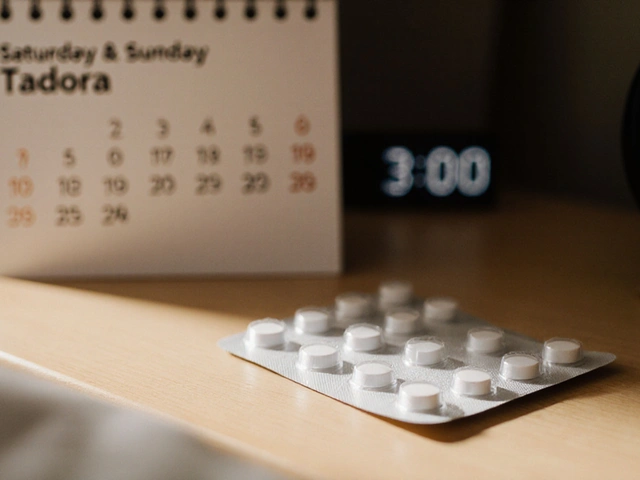Pyruvate Weight Loss: Simple Guide to Benefits, Dosage, and Safety
If you’ve heard about pyruvate as a fat‑burning aid, you’re not alone. Many people look for a quick edge when they start a diet, and pyruvate often pops up in supplement aisles and fitness forums. Before you add a new pill to your routine, let’s break down what pyruvate actually does, what the research says, and how to use it without risking your health.
How Pyruvate Works for Fat Burning
Pyruvate is a natural molecule that sits at the crossroads of carbohydrate metabolism. When you eat carbs, your body turns them into glucose, and glucose eventually becomes pyruvate during glycolysis. In the presence of oxygen, pyruvate moves into the mitochondria, where it helps produce energy (ATP). The idea behind a pyruvate supplement is that it can boost this energy pathway, increase the rate at which calories are burned, and spare muscle glycogen during exercise.
Short‑term studies in athletes show a modest rise in oxygen consumption and a slight uptick in fat oxidation when a single dose of sodium pyruvate is taken before a workout. The effect isn’t dramatic—think a 5‑10% increase in calorie burn—but it can add up if you train regularly. Importantly, most of the benefit comes from improved metabolic efficiency rather than a direct “melt‑the‑fat” action.
How to Take Pyruvate Safely
When it comes to dosing, the research community hasn’t agreed on a single sweet spot. Most studies use 2‑5 grams of sodium pyruvate per day, split into two doses taken with meals. Starting low—around 1 gram in the morning and 1 gram in the evening—helps you gauge tolerance. If you feel fine after a week, you can slowly increase to 3 grams total.
A few safety notes: high doses may cause mild stomach upset, diarrhea, or a temporary sour taste in the mouth. People on blood‑thinning medication should talk to a doctor first, because pyruvate can affect platelet function in rare cases. Also, if you have kidney issues, avoid large amounts because the extra load of sodium could be problematic.
Pairing pyruvate with a balanced diet and regular exercise gives the best results. Think of it as a small boost, not a miracle fix. A typical week might look like this: take 1 gram of pyruvate with breakfast, another gram with dinner, keep protein intake steady, and aim for at least 150 minutes of moderate cardio. Over a month, you may notice a modest drop in body fat percentage, especially if you’re already in a calorie deficit.
Bottom line: pyruvate can support weight‑loss efforts by enhancing energy metabolism, but it works best when combined with solid nutrition and training habits. Stick to the 2‑5 gram daily range, watch for any stomach discomfort, and consult a health professional if you have existing medical conditions. With realistic expectations, pyruvate becomes a useful piece of the larger weight‑loss puzzle.

Pyruvate for Weight Loss: Evidence, Dosage, and Real Results (2025)
Does pyruvate help with fat loss? See what the science says, safe dosage, side effects, and how to use it with diet and training in 2025-NZ-friendly advice.
Aug 16 2025




